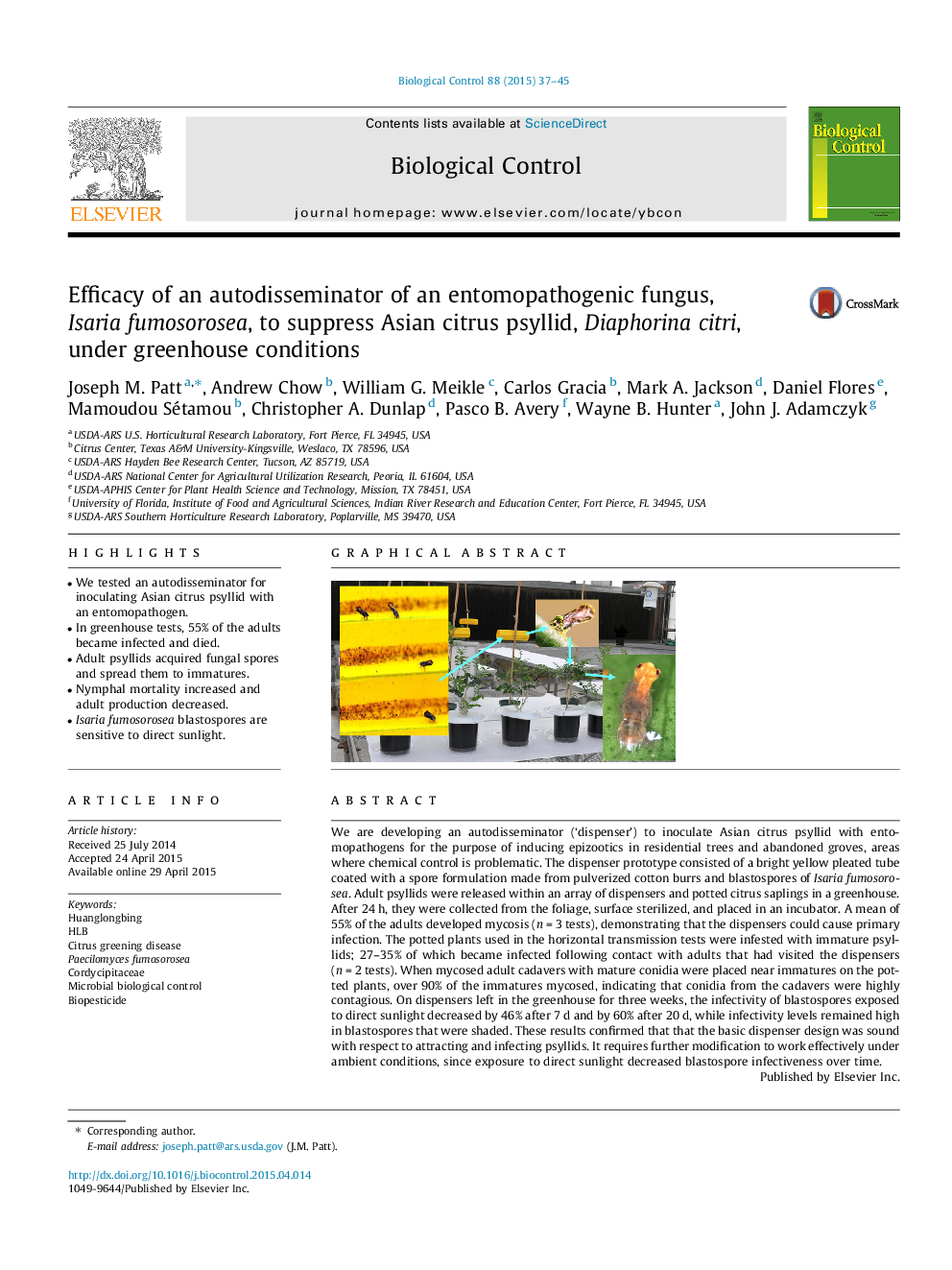| کد مقاله | کد نشریه | سال انتشار | مقاله انگلیسی | نسخه تمام متن |
|---|---|---|---|---|
| 4503782 | 1624246 | 2015 | 9 صفحه PDF | دانلود رایگان |

• We tested an autodisseminator for inoculating Asian citrus psyllid with an entomopathogen.
• In greenhouse tests, 55% of the adults became infected and died.
• Adult psyllids acquired fungal spores and spread them to immatures.
• Nymphal mortality increased and adult production decreased.
• Isaria fumosorosea blastospores are sensitive to direct sunlight.
We are developing an autodisseminator (‘dispenser’) to inoculate Asian citrus psyllid with entomopathogens for the purpose of inducing epizootics in residential trees and abandoned groves, areas where chemical control is problematic. The dispenser prototype consisted of a bright yellow pleated tube coated with a spore formulation made from pulverized cotton burrs and blastospores of Isaria fumosorosea. Adult psyllids were released within an array of dispensers and potted citrus saplings in a greenhouse. After 24 h, they were collected from the foliage, surface sterilized, and placed in an incubator. A mean of 55% of the adults developed mycosis (n = 3 tests), demonstrating that the dispensers could cause primary infection. The potted plants used in the horizontal transmission tests were infested with immature psyllids; 27–35% of which became infected following contact with adults that had visited the dispensers (n = 2 tests). When mycosed adult cadavers with mature conidia were placed near immatures on the potted plants, over 90% of the immatures mycosed, indicating that conidia from the cadavers were highly contagious. On dispensers left in the greenhouse for three weeks, the infectivity of blastospores exposed to direct sunlight decreased by 46% after 7 d and by 60% after 20 d, while infectivity levels remained high in blastospores that were shaded. These results confirmed that that the basic dispenser design was sound with respect to attracting and infecting psyllids. It requires further modification to work effectively under ambient conditions, since exposure to direct sunlight decreased blastospore infectiveness over time.
Figure optionsDownload as PowerPoint slide
Journal: Biological Control - Volume 88, September 2015, Pages 37–45